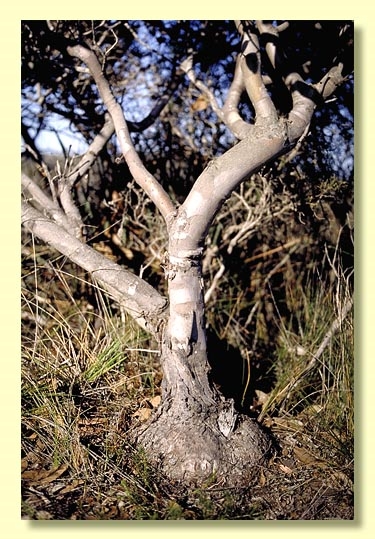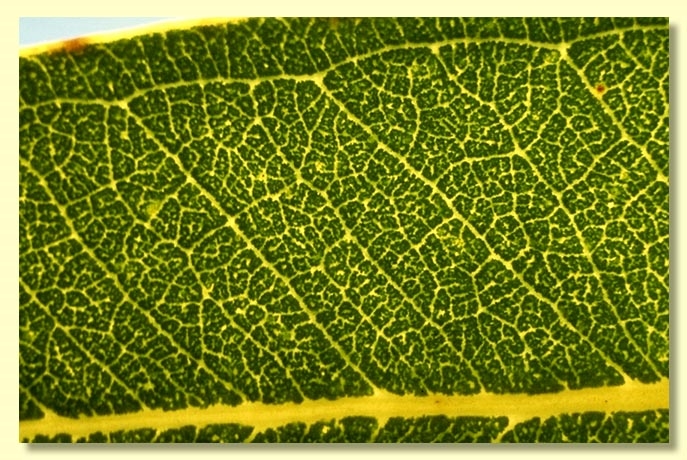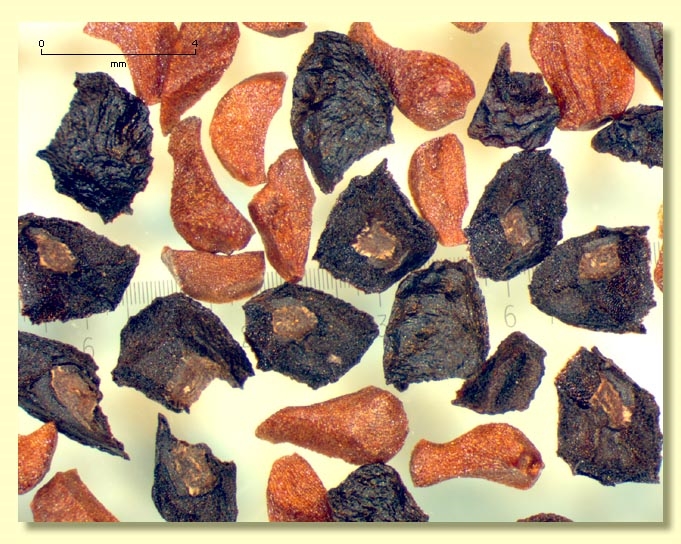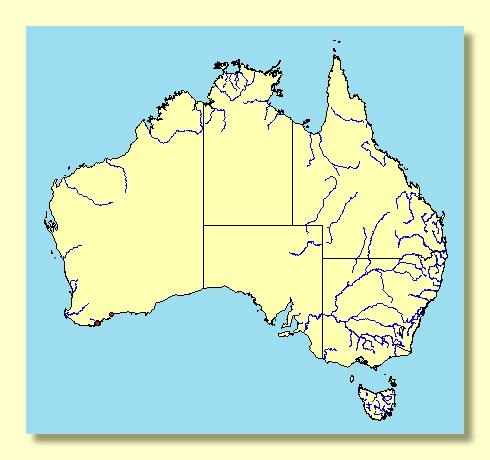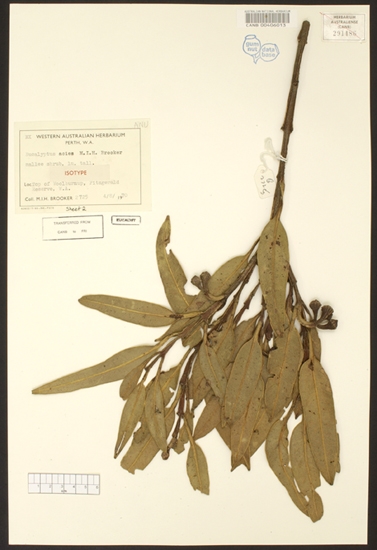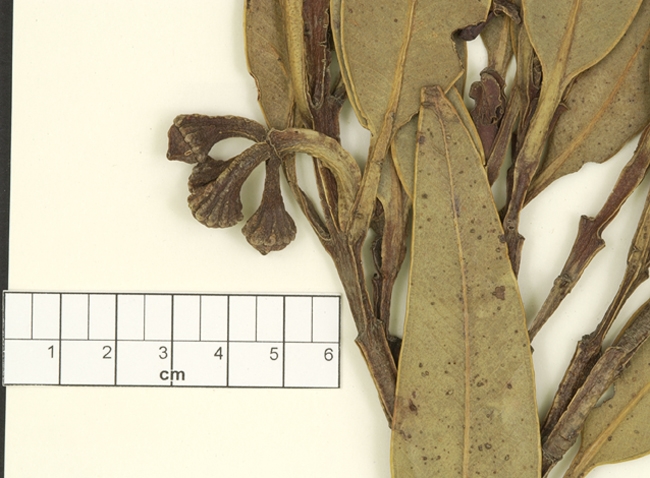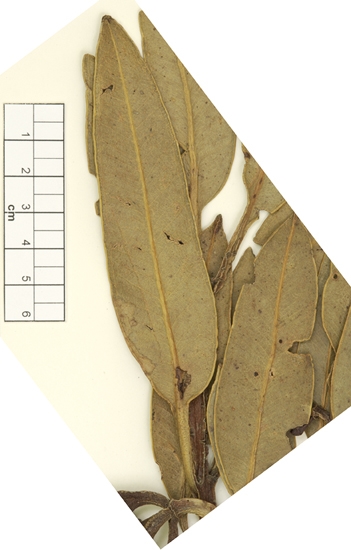Euclid - Online edition
Eucalyptus acies
Eucalyptus | Eucalyptus | Longistylus | Frutices | Proximae
Bark smooth, mottled shades of pale grey, pink-grey and brown-grey.
Branchlets conspicuously quadrangular and yellow; lacking oil glands in the pith.
Juvenile growth (coppice or field seedlings to 50 cm): stems square in cross-section; juvenile leaves sessile to shortly petiolate, opposite, elliptical to broadly lanceolate, 7–12 cm long, 3–5 cm wide, thick, green.
Adult leaves thick, coarse, opposite to sub-opposite, petioles 1.3–3.3 cm long; blade lanceolate, 8–13.5 cm long, 2–4 cm wide, base tapering to petiole, margin entire, apex pointed, concolorous, dull bluish green at first but maturing glossy, green, side-veins greater than 45° to midrib, reticulation moderate to dense, intramarginal vein remote from margin, oil glands irregular, island or obscure.
Inflorescence axillary unbranched, peduncles flattened, widest apically, down-curved, 1.5–3.2 cm long, buds 7 per umbel, pedicels (0.2)0.6–0.9 cm long. Mature buds obovoid to globular, 0.6–0.9 cm long, 0.7–0.9 cm wide, the hypanthium with ca 10–12 shallow longitudinal ribs, scar absent, the single operculum shallowly conical to rounded and umbonate, stamens mostly inflexed, a few irregulary disposed, anthers oblong to reniform, versatile, dorsifixed, dehiscing by longitudinal slits that are not confluent apically, style long and straight, stigma tapered, locules 3, the placentae each with 2 vertical rows of ovules. Flowers cream or pale yellow.
Fruit pedicellate (pedicels 0.2–0.9 cm long), rigidly down-turned, campanulate to cupular, 0.9–1.2 cm long, 1.3–1.5 cm wide, ribbed especially in upper third, disc level or slightly raised-convex, valves 3, near rim level.
Seeds black, 2–5 mm long, truncate-pyramidal to obliquely elongated or almost cuboid, dorsal surface often lacunose but otherwise smooth, ventrally ridged, hilum terminal.
Cultivated seedlings (measured at ca node 10): cotyledons reniform, large; seedlings very branched; stems rounded in cross-section; leaves sessile, opposite and amplexicaul for at least 14 nodes, oblong-elliptic, 3.5–8 cm long, 2.5–5 cm wide, dull, green, apex rounded and apiculate.
Flowering has been recorded in January, September, October and November.
A straggly shrub or low mallee endemic to Western Australia, found in Fitzgerald National Park and westwards towards Albany, occurring usually on hills, e.g. Thumb Peak, Middle Mount Barren, Woolbernup, Mount Manypeaks, but also on high dunes at Cheyne Beach and South Sister Nature Reserve.
Eucalyptus acies belongs in Eucalyptus subgenus Eucalyptus section Longistylus subsection Frutices where it is the only species in series Proximae, characterised by smooth bark, very angular branchlets with opposite to sub-opposite petiolate leaves, umbels on down-turned peduncles, in 7s, enclosed by conspicuous bracts when young, buds with a single operculum (hence no operculum scar), stamens ± inflexed in bud, anthers that dehisce by completely separate slits, ovules arranged in two rows on the placenta, flat-topped fruit, seeds cuboid-pyramidal and seedlings with sessile stem-clasping leaves for many nodes.
It is easily recognised by the low habit, broad thick sub-opposite leaves, angular branchlets and rigidly down-curved inflorescences.


